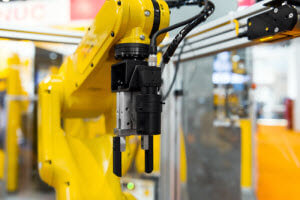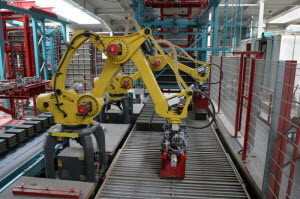Industrial Robot: Sensory Software to Differentiate Between Workers & Other Objects
Industrial robots are becoming a prevalent part of the industry. According to The San Antonio Express-News, the Southwest Research Institute is developing cutting-edge technology in robotics and programming that will allow industrial robots to differentiate between workers and other objects.
But how will this new innovation benefit the industry?
New Technologies to Ensure Safety and Efficiency
 Industrial robots have become one of the most beneficial tools in manufacturing. They help to streamline operations and boost overall efficiency in the facility. But with the new sensory software being developed, the robots can track humans and distinguish them from other objects, making the robots safer and even more efficient.
Industrial robots have become one of the most beneficial tools in manufacturing. They help to streamline operations and boost overall efficiency in the facility. But with the new sensory software being developed, the robots can track humans and distinguish them from other objects, making the robots safer and even more efficient.
Some industrial robots already have sensors to see if anything is in front of them when moving. In certain facilities, they follow a wire embedded in the ground so they know where they’re supposed to go. These machines also have sensors to see if anything is in front of them. If you or an object gets in its way, the robot will stop. However, the way current robots operate can lead to decreased production performance. The new sensory software being developed helps to prevent that.
“Now the robot can make intelligent decisions about how it’s going to move through the workspace, how quickly, what’s the most the efficient path, and how to do that without colliding into other objects in the workspace,” said Paul Evans, director of the Southwest Research Institute’s production and simulation technologies.
More Cost-Effective Operations
Industrial robots slowly but steadily have become more prominent in the manufacturing industry. In fact, The San Antonio Express-News reported that more than 229,000 robots were sold in 2014, a 29% increase from the previous year.
 These robots can cost between $70,000 and $400,000 and can take about two to nine months to build. However, once these robots are in a facility, businesses will experience reduced operational costs.
These robots can cost between $70,000 and $400,000 and can take about two to nine months to build. However, once these robots are in a facility, businesses will experience reduced operational costs.
Industrial robots are designed to make the production process more efficient. When they first emerged on the market, they were designed to be extra hands within a facility to better push the production process forward. Now these upcoming robots and advanced technologies are being designed to create more products at a faster rate while helping to reduce the cost of operation.
Considerations
The sensory software is still in its development stages. While it’s clear that the technology will work to enhance overall workflow and capacity, we won’t know how exactly it will benefit robotic performance until the software is completed and tested.
Regardless, we can expect these new advancements to help the industry grow and become more efficient in the years to come.
Read CPV Manufacturing’s blog for more industry news and updates.

